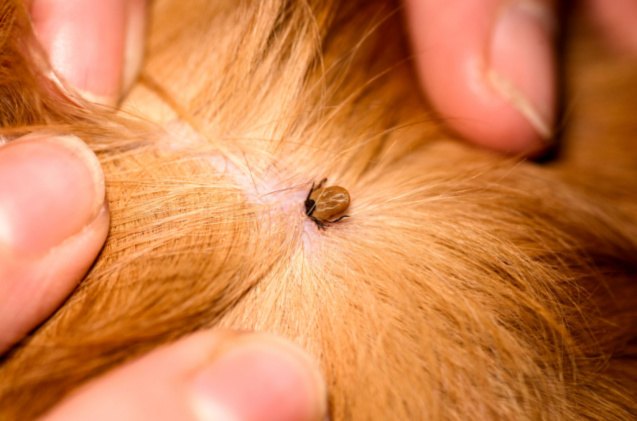Lyme Disease In Dogs Is On the Rise: Here's What You Need to Know

Exploring the great outdoors with your best friend by your side is one of the best activities you can do in the summer – but there are a few things you should have in mind to ensure your pet’s safety and wellbeing while you’re out and about. One of the most important is to protect your pet from ticks, who carry Lyme disease and can infect your pooch with a single bite and cause serious health issues.
Unfortunately, veterinarians are seeing a spike in Lyme disease cases this year, with a new infection reported each day – a significant increase when compared to the previous summer. Dr. Julia Lucas, from Cumberland Animal Clinic, attributes the rising numbers to higher temperatures, as warmer weather caused ticks to become active earlier in the year. She also mentioned that many people adopted their first dog in the pandemic, so they might not know how to properly protect their pets from these blood-sucking pests.
Regardless of whether you’re a seasoned dog parent or a first-time owner, you should brush up on the symptoms and methods of prevention of Lyme disease in dogs, to make sure you and your four-legged bestie have a great time this summer – with no unnecessary trips to the vet’s office.
What Is Lyme Disease?
Also known as Lyme borreliosis, this bacterial disease is transmitted from ticks to humans, dogs, and other animals. Not all ticks are Lyme disease carriers, though – in the US, species that are most likely to be infectious are the black-legged tick (deer tick), and western black-legged tick. For the tick to infect your pet, it has to be attached to them for at least 24 to 48 hours. While not fatal on its own for canines, if left untreated Lyme disease can lead to death due to kidney failure.
Symptoms of Lyme Disease in Dogs
You might have not even noticed the tick attached to your pet’s body – but if you notice any of these symptoms, you’ll want to take your pet to the vet and get them tested for Lyme disease.
- Lameness due to joint inflammation
- Fever
- Lethargy
- Loss of appetite
- Swollen joints and/or lymph nodes
- Cardiac and neurological issues
- Kidney failure
It’s important to note that not all dogs who are infected with Lyme disease will display symptoms of the illness – sometimes, the body just fights off the infection on its own, without it progressing to actually affect your pet’s health. Even so, if you notice any unusual behavior that matches symptoms of Lyme disease or you’ve noticed a deer tick attached to your dog’s skin, it pays to contact a vet and get an early start with treatment.
Is Lyme Disease in Dogs Treatable?
The usual course of action for treating Lyme disease in dogs is putting them on antibiotics for 30 days to fight off the bacterial infection. However, depending on your pet’s specific symptoms (e.g. swelling or issues with kidneys), additional therapies might be required to help treat the issues that have arisen as a result of the infection.
How to Prevent Lyme Disease in Dogs
You know what they say – better safe than sorry! The key to avoiding a potentially serious health scare with your pet and expensive vet bills is to make sure your pet isn’t bitten by a tick in the first place. Luckily, that’s not all that hard, with a range of products aimed at repelling and killing ticks as soon as they come into contact with your pet’s skin. Whether it’s waterproof collars, topical treatments, or chewables, the choice is yours – as long as it keeps your furbaby safe on your outdoor adventures.
Additionally, you should always make sure to thoroughly check your dog (and yourself) for signs of ticks every time you come home from your walk. Ticks can be found just about anywhere, from patches of grass to thick shrubs, so it’s smart to be on the lookout for these tiny parasites. If you happen to notice a tick attached to your pet, remove it as soon as possible, as the longer it's feeding, the higher the chance for the transmission of Lyme disease.

A proud mama to seven dogs and ten cats, Angela spends her days writing for her fellow pet parents and pampering her furballs, all of whom are rescues. When she's not gushing over her adorable cats or playing with her dogs, she can be found curled up with a good fantasy book.
More by Angela Vuckovic






















